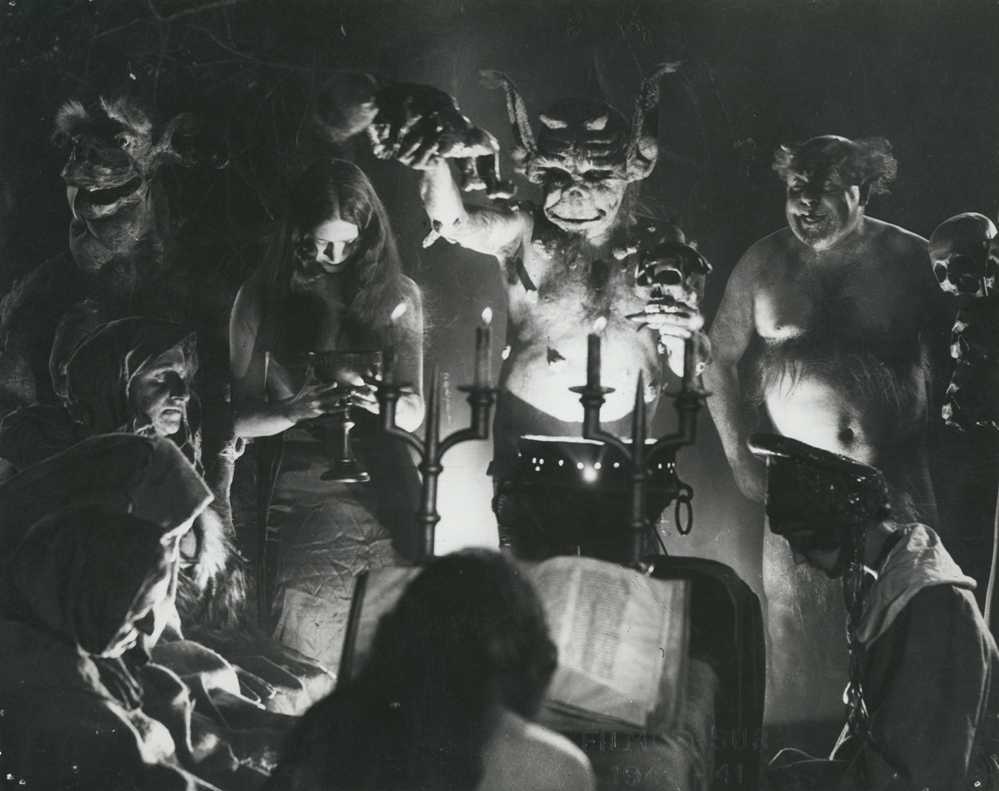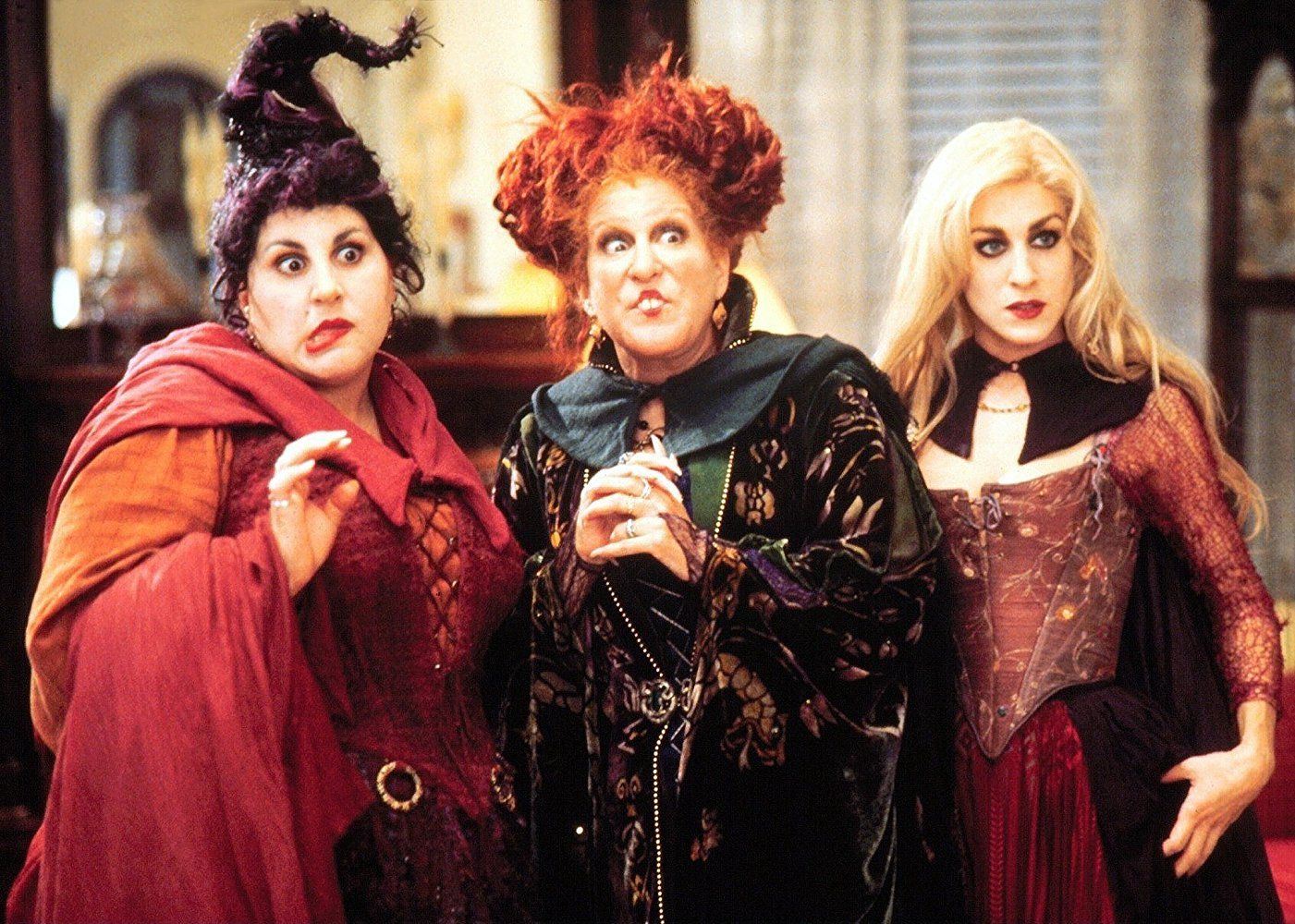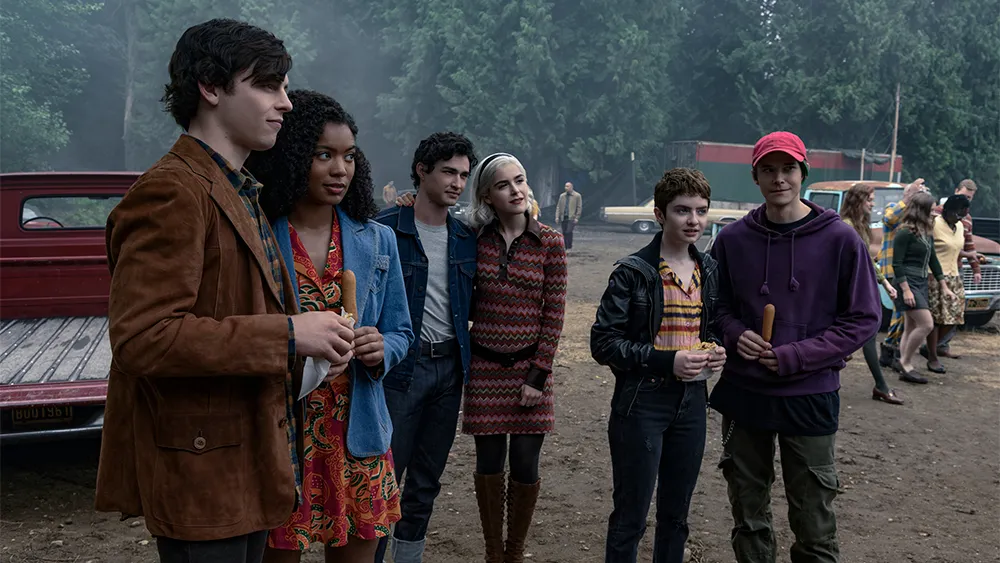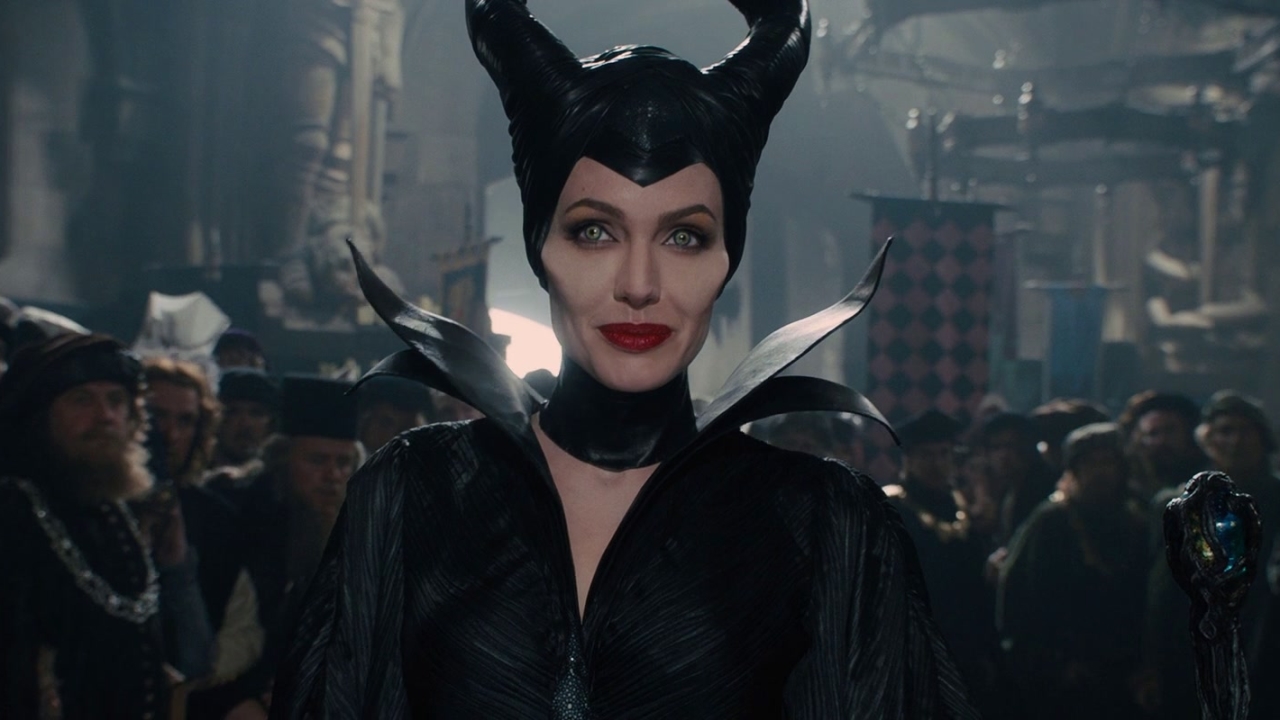Witchcraft In Cinema - Unraveling The Magical Tapestry Of Film
Witchcraft, an age-old practice shrouded in mystery and intrigue, has captivated human imagination for centuries. In cinema, this mystical realm finds expression through a diverse tapestry of narratives, characters, and visual motifs. This article delves into the exploration of witchcraft in cinema, examining its evolution, impact, and the cultural nuances woven into the fabric of these bewitching tales.
Jan 23, 20242 Shares42 Views
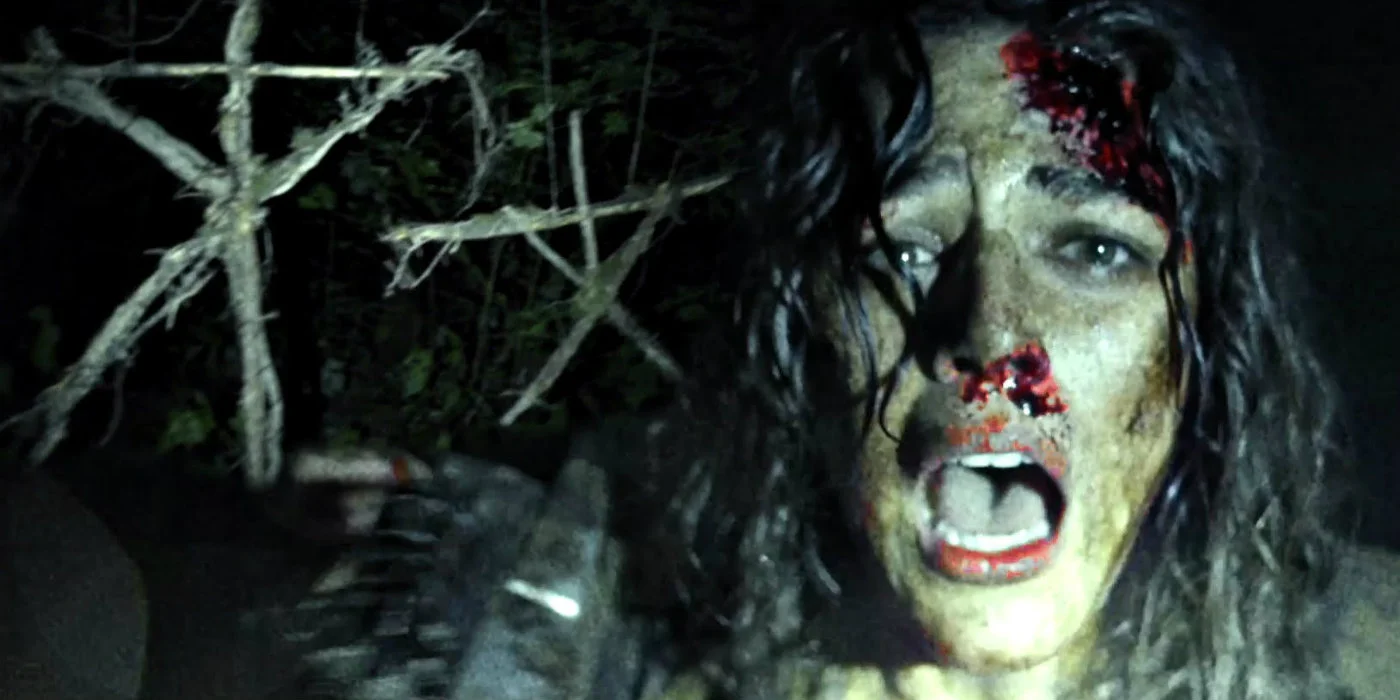
Witchcraft, an age-old practice shrouded in mystery and intrigue, has captivated human imagination for centuries. In cinema, this mystical realm finds expression through a diverse tapestry of narratives, characters, and visual motifs. This article delves into the exploration of witchcraft in cinema, examining its evolution, impact, and the cultural nuances woven into the fabric of these bewitching tales.
Historical Roots - From Silent Spells To Modern Enchantments
Early Depictions In Silent Cinema
The inception of witchcraft in cinema traces its roots to the mesmerizing realm of silent films. One noteworthy landmark during this era was the release of "Häxan" (1922), a groundbreaking film that delved into the world of witches with a unique blend of historical documentation and horror. Directed by Benjamin Christensen, "Häxan" was more than just a cinematic creation; it was an exploration of the historical and societal perceptions of witchcraft.
The film adopted a documentary-style approach, using a combination of dramatic reenactments and scholarly insights to unravel the mysteries of witchcraft. "Häxan" not only captured the imaginations of audiences but also served as an educational tool, shedding light on the superstitions and fears that surrounded witches throughout history. This innovative approach set the stage for the cinematic exploration of magic and the supernatural, leaving an indelible mark on the evolving landscape of occult cinema.
Witchcraft In Classic Hollywood
As Hollywood continued to flourish, the portrayal of witches underwent a transformation in classic films that remains iconic to this day. In "The Wizard of Oz" (1939), witches assumed a pivotal role in the fantastical narrative, with characters like the Wicked Witch of the West captivating audiences with their magical prowess. The film not only showcased the enchanting aspects of witchcraft but also embedded these characters in the collective consciousness of generations.
"Bell, Book and Candle" (1958) marked another milestone in the cinematic exploration of witchcraft during the classic Hollywood era. This romantic comedy, starring Kim Novak as a modern-day witch, took a lighter approach, portraying witches as charming and mischievous figures. The film, in its whimsicality, contributed to a prevailing trend of romanticizing witchcraft in Hollywood, emphasizing its magical allure rather than its traditionally menacing associations.
The Evolution Of Witches On Screen
Feminism And Empowerment
The portrayal of witches in cinema underwent a transformative evolution during the late 20th century, mirroring the changing dynamics of society and aligning with the feminist movements of the time. This shift marked a departure from traditional stereotypes, presenting witches as symbols of female empowerment and resilience.
Exploration Through "The Craft" (1996)
One defining moment in this evolution was the release of "The Craft" (1996), a film that delved into the lives of a group of teenage witches navigating the complexities of high school and personal empowerment. Directed by Andrew Fleming, the movie embraced feminist themes by portraying the protagonists as young women who found strength in embracing their magical abilities.
"The Craft" not only explored the supernatural but also delved into the struggles faced by its female characters, addressing issues of identity, bullying, and societal expectations. By intertwining magic with personal empowerment, the film resonated with audiences and contributed to a redefinition of witches as powerful symbols of agency and strength.
Villainous Witches In Horror
Simultaneously, the horror genre embraced a darker facet of witchcraft, portraying malevolent witches as formidable antagonists that tapped into primal fears associated with the unknown, superstition, and ancient rituals.
Terrifying Encounters In "The Witches" (1990)
"The Witches" (1990) is a prime example of horror cinema embracing the malevolent witch archetype. Based on Roald Dahl's novel, the film, directed by Nicolas Roeg, presented witches as sinister figures with a deep-seated hatred for children. The fear instilled by these witches stemmed not only from their supernatural abilities but also from their cunning and malevolence.
Found-Footage Horror In "The Blair Witch Project" (1999)
"The Blair Witch Project" (1999) took a unique approach to horror by utilizing found-footage techniques, creating an atmosphere of suspense and dread. While the witch in the film remains largely unseen, the psychological horror emanates from the characters' primal fear of the supernatural and the unknown. This film exemplifies how horror cinema capitalized on the mystique surrounding witches, tapping into ancient fears and folklore.
Symbolism And Imager - A Cinematic Cauldron Of Elements
Pentagrams, Spells, And Rituals
Witchcraft in cinema unfolds as a captivating tapestry woven with distinct visual elements that transcend the ordinary. Filmmakers, like alchemists, infuse their craft with symbols that evoke a sense of the otherworldly. The use of pentagrams, spellcasting, and ritualistic scenes becomes an art form, creating a unique atmosphere that lingers in the minds of audiences. These symbols not only serve as narrative devices but also contribute significantly to the overall aesthetic of occult cinema.
Pentagrams As Portals
The pentagram, a five-pointed star enclosed within a circle, is a potent symbol in witchcraft. In cinema, it serves as a visual portal into the mystical realms. Filmmakers strategically employ pentagrams in scenes of magical invocation, where the convergence of the five points amplifies the potency of spells. Whether etched on the ground during ritualistic ceremonies or suspended in the air as a shimmering sigil, the pentagram establishes a visual language that transcends the mundane and transports audiences into the arcane.
Spellcasting As Cinematic Alchemy
The act of spellcasting becomes a cinematic alchemy, where words transform into incantations and gestures into potent charms. From the whispered recitation of ancient spells to the intricate hand movements that weave magic into existence, spellcasting in films is a choreography of the ethereal. The visual spectacle of spells unfolding on screen not only advances the plot but also enchants viewers, immersing them in a world where the boundaries between reality and the supernatural blur.
Ritualistic Scenes - Crafting Cinematic Magic
Rituals, with their rhythmic sequences and symbolic gestures, are cinematic spectacles that elevate the mystical ambiance. Whether it's a coven gathering beneath a moonlit sky or a solitary witch communing with unseen forces, ritualistic scenes are choreographed with precision. The use of candles, herbs, and mystical symbols in these rituals adds layers of detail, transforming the ordinary into the extraordinary. Filmmakers harness the power of ritualistic imagery to transport audiences into the heart of occult practices, creating an immersive experience that transcends the screen.
The Witch's Familiar
Cinematic witches rarely traverse the mystical realms alone; they are often accompanied by familiars—animal companions with magical significance. The symbolism surrounding these familiars adds intricate layers to the portrayal of witches, connecting them to ancient folklore and mysticism.
Familiars As Symbolic Companions
Familiars, whether in the form of cats, ravens, or serpents, are more than mere companions; they embody a deeper connection to the magical forces at play. In cinematic portrayals, familiars are symbols of intuition, guidance, and the supernatural bond between the witch and the unseen realms. Their presence serves as a visual cue, signaling the witch's mastery over the arcane and her alignment with forces beyond the mortal realm.
Ancient Folklore And Mysticism
Exploring the symbolism of familiars unveils a rich tapestry of ancient folklore and mysticism. In various cultures, animals have long been regarded as spiritual guides and guardians. Cinematic witches, with their familiars, tap into this universal symbolism, bridging the gap between the human and the mystical. The relationship between the witch and her familiar becomes a visual metaphor for the symbiotic connection between magic and nature, echoing the age-old wisdom found in folklore from across the globe.
Contemporary Trends And Future Enchantments
Witches In The Streaming Era
The rise of streaming platforms has provided a fertile ground for diverse narratives. Series like "Chilling Adventures of Sabrina" (2018–2020) and "A Discovery of Witches" (2018–present) showcase the continued fascination with witchcraft, embracing complex characters and intricate plots.
Experimental Filmmaking And Occult Aesthetics
Contemporary filmmakers are experimenting with occult aesthetics, employing unconventional storytelling techniques influenced by occult symbolism. This trend promises a more nuanced and visually engaging exploration of witchcraft in future cinematic endeavors.
The 10 Greatest Witches In Cinema - A Spellbinding Countdown
Witches have long held a bewitching allure on the silver screen, enchanting audiences with their magical prowess, complex characters, and captivating narratives. This countdown explores the ten greatest witches in cinema, each leaving an indelible mark on the cinematic landscape. From iconic performances to spellbinding stories, these cinematic witches have cast their enchantments, transcending the boundaries of fantasy to become timeless symbols of magic and mystery.
1. The Wicked Witch Of The West (The Wizard Of Oz, 1939)
Margaret Hamilton's portrayal of the Wicked Witch of the West is etched into cinematic history. With her cackling laugh and menacing green visage, she embodies the archetype of the malevolent witch, haunting the dreams of generations.
2. Elphaba (Wicked, 2022)
Originating from the acclaimed musical "Wicked," Elphaba offers a nuanced exploration of the Wicked Witch of the West's backstory. Defying traditional witch stereotypes, Elphaba's complex character challenges perceptions and adds depth to the iconic villain.
3. Hermione Granger (Harry Potter Series, 2001–2011)
Emma Watson's portrayal of Hermione Granger showcases a modern witch who defies conventions. Intelligent, resourceful, and a key figure in the fight against dark forces, Hermione redefines the role of witches in contemporary cinema.
4. The White Witch (The Chronicles Of Narnia Series, 2005–2010)
Tilda Swinton's ethereal portrayal of the White Witchembodies the icy allure of a powerful enchantress. Her presence in Narnia is both enchanting and chilling, making her one of the most memorable cinematic witches.
5. The Grand High Witch (The Witches, 1990)
Anjelica Huston's Grand High Witch is a mesmerizing blend of elegance and malevolence. Her transformation and plan to turn children into mice create a character that is both terrifying and fascinating.
6. The Witch (The Witch, 2015)
Anya Taylor-Joy's performance in "The Witch" brings a sense of eerie authenticity to the portrayal of a 17th-century witch. The film's atmospheric tension and Taylor-Joy's compelling acting make this witch a haunting presence.
7. Ursula (The Little Mermaid, 1989)
While Ursula is technically a sea witch, her iconic presence in Disney's "The Little Mermaid" earns her a spot on this list. With her commanding personality and memorable song, Ursula has become a beloved cinematic witch.
8. The Blair Witch (The Blair Witch Project, 1999)
The Blair Witch is a testament to the power of the unseen. In this found-footage horror film, the witch remains a mysterious and terrifying force, leaving audiences to imagine the horrors that lurk in the shadows.
9. The White Widow (Stardust, 2007)
Michelle Pfeiffer's portrayal of the malevolent White Widow in "Stardust" showcases a glamorous yet deadly witch. Her pursuit of eternal youth adds a layer of complexity to this enchanting character.
10. Maleficent (Maleficent, 2014)
Angelina Jolie's reimagining of Maleficent challenges the traditional narrative of Sleeping Beauty. With her iconic horns and conflicted nature, Maleficent stands as a symbol of redemption and the transformative power of love.
Witchcraft In Cinema - FAQs
What Is The Witch Archetype In Film?
The witch archetype in film is a recurring character type that embodies magical abilities, often depicted as a practitioner of witchcraft or the occult. This archetype has evolved over time and can encompass various characteristics, from benevolent and wise figures to malevolent and menacing antagonists.
The witch archetype is recognized for its link to supernatural abilities, mystical wisdom, and a profound connection to the unseen realms. This cinematic archetype exhibits versatility as witches can be depicted as heroic protagonists, intricate antiheroes, or formidable adversaries, showcasing the diverse portrayals within the realm of witchcraft in films. For more insights into the world of witches and their cultural impact, you can explore WitchTok.
What Movie Has A Witch In It?
Numerous movies feature witches as central characters or important elements of the plot. One notable example is "The Wizard of Oz" (1939), where the Wicked Witch of the West is a prominent antagonist. Another film that prominently features witches is "The Witch" (2015), a horror film set in 17th-century New England, exploring themes of paranoia and supernatural terror.
Additionally, "Hocus Pocus" (1993) is a family-friendly comedy that revolves around three witches resurrected in modern-day Salem. These are just a few examples, as witches have been portrayed in a wide range of genres, providing diverse cinematic experiences.
What Genre Is Witchcraft Movies?
Witchcraft movies belong to a variety of genres, showcasing the versatility of the theme across different storytelling styles. The genre classification can vary based on the primary focus of the film. Some common genres associated with witchcraft movies include:
- Horror:Many witchcraft movies fall into the horror genre, featuring malevolent witches, dark rituals, and supernatural elements that instill fear and suspense.
- Fantasy:Films that explore magical worlds, often with witches as key characters, are categorized under the fantasy genre. These movies may include magical adventures, mythical creatures, and epic quests.
- Drama:Some films use witchcraft as a backdrop for character-driven dramas, exploring personal journeys, conflicts, and relationships within the context of magical practices.
- Comedy:Witchcraftis occasionally featured in comedic films, where the magical elements serve as a source of humor. These movies often blend fantasy with lighthearted and humorous storytelling.
- Historical:Witchcraft movies set in historical periods or inspired by historical events fall into the historical genre. These films may explore the societal perceptions and consequences of witchcraft in different eras.
Conclusion
Witchcraft in cinema remains a potent source of inspiration, weaving tales of magic, empowerment, and horror. From silent films to modern streaming series, the portrayal of witches reflects societal attitudes, evolving alongside cultural shifts. As filmmakers continue to explore the mystical realms of witchcraft, audiences are invited to embark on enchanting journeys where the lines between reality and magic blur, casting a spell that lingers long after the credits roll.
Latest Articles
Popular Articles
